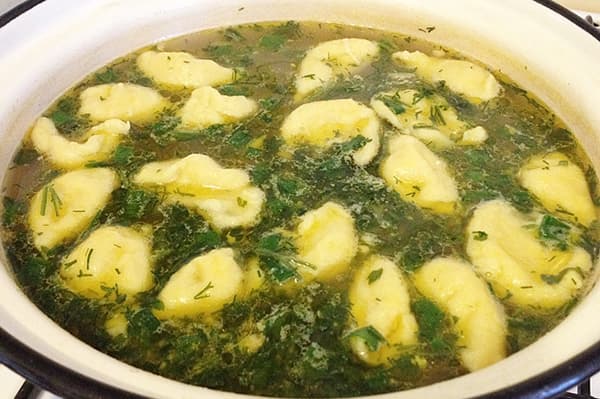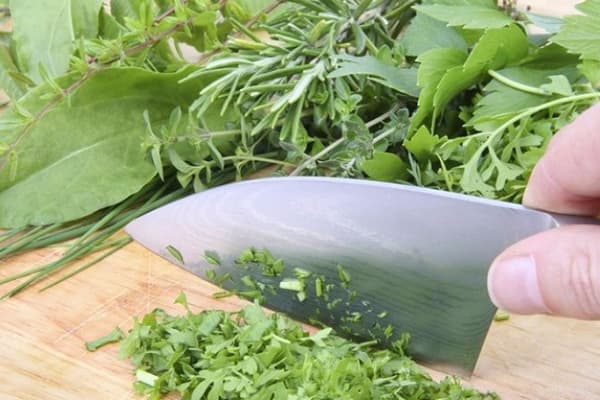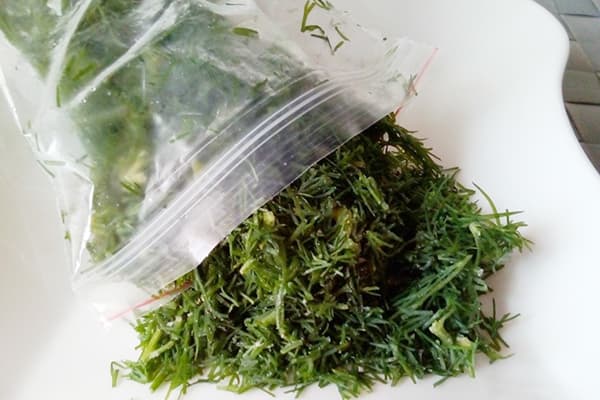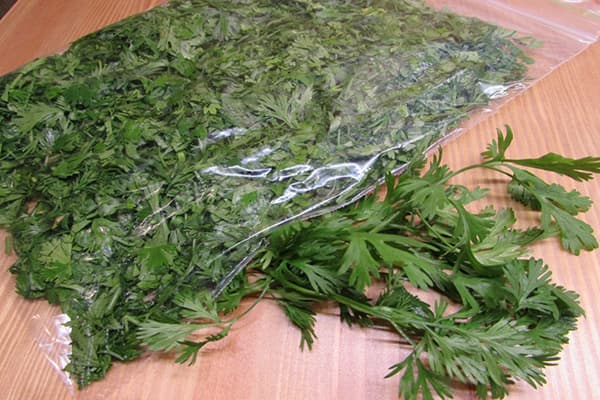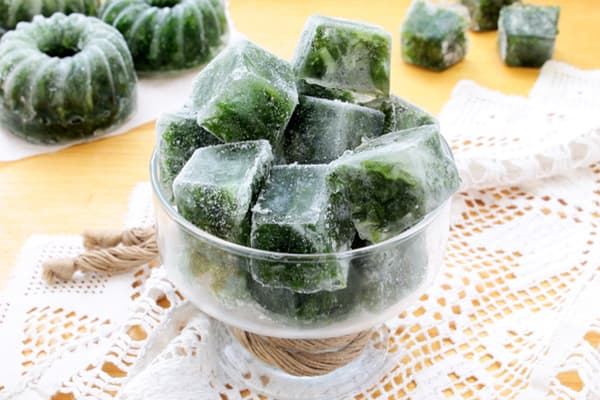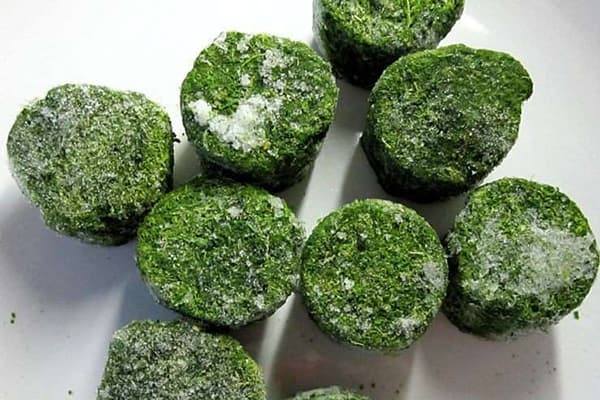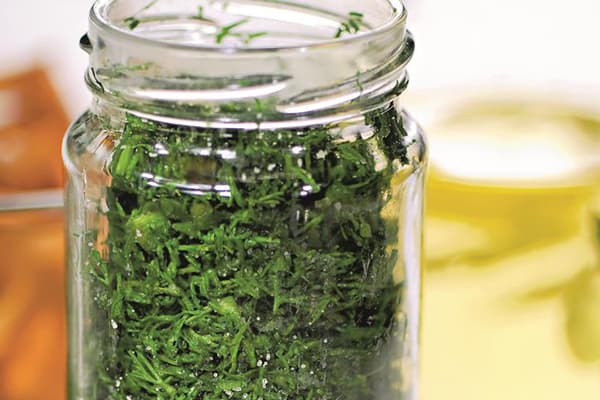How to freeze fresh greens for the winter: recipes for every taste
Content:
In the summer, many housewives are faced with the choice: to freeze fresh greens for the winter, to dry or to salt? The first option has many advantages, from the simplicity of the procurement process to the preservation of taste and aroma. In order to get a beautiful and nutritious product from the freezer in the cold season, rather than a withered slurry, you need to try in advance. We will tell you what greens can be frozen, how to do it correctly and how much such a product can be stored.
Why freeze greens for the winter?
By the content of vitamins, macro- and microelements, greens, as a rule, surpasses vegetables, fruits and even berries. So, parsley and dill, popular in Russia, in large quantities contain the following useful substances:
- carotenoids;
- antioxidant vitamins: A, C, E;
- vitamin K;
- folic acid;
- potassium and magnesium;
- calcium and phosphorus;
- sulfur;
- iron;
- chromium;
- zinc.
The human body needs these chemical elements all year round, but in winter is faced with a deficiency. What about fresh leafy vegetables and herbs sold in stores? Often manufacturers grow them on depleted soils, using fertilizers and pesticides. In-store products are unlikely to help your body become healthier.
The best way to satisfy the need for vitamins and minerals in winter is to pre-harvest herbs. When drying and salting, most of the nutrients are lost, in contrast to freezing. The latter, with a competent approach, also allows you to save up to 50-60% of the taste of the product.
Frozen greens can be added to almost any dish: soups, salads, boiled potatoes, meat, fish. In finely chopped form, it is perfect as a filling for savory pies, pies and pancakes. And large leaves from bunches will go to decorate food.
Which greens can be frozen and which not?
From the point of view of the preservation of nutrients, any greens can be frozen. Quick freezing at temperatures from -18 to -25 degrees can save up to 90–95% of vitamins. Partially destroyed only vitamin C.
However, there are nuances associated with a deterioration in taste. So, watery plant species (chives, lettuce) after thawing become lethargic, slimy and change their taste. Of course, you can freeze them, preserving them as sources of vitamins. But will you eat later?
Many people do not like how basil becomes after thawing. From fresh spice it turns into a tasteless herb. Therefore, experienced housewives still prefer to dry the basil.
You can freeze not only “salad” greens, but also medicinal herbs: lemon balm leaves, mint, raspberry, blackcurrant, fireweed, thyme and others. Such preparations are suitable for the preparation of aromatic teas, medicinal decoctions and cosmetic procedures.
Preparation of greens for freezing
So that the greens do not turn into a dark green porridge in the freezer, it must be carefully prepared for freezing. Follow these steps:
- Pour warm (not hot) water into the basin, lower the plants into it for 2-3 minutes. Rinse thoroughly.
- Rinse under running water.
- Put on cotton towels in one layer, let dry for an hour. Note that you can not leave grass in direct sunlight.
For freezing, greens just gathered in the garden are more suitable.The less time passes from the moment of collection to harvesting, the more vitamins will remain.
Some mistresses blanch herbs before freezing (pour over boiling water). This action allows you to extend the shelf life of the product, it is better to preserve the color and aroma. However, it destroys some of the vitamins. Blanch the greens or not, you decide.
Three ways to freeze greens
The choice of method of freezing depends on which dishes and drinks you are going to add herbs in the winter.
Chopped
Finely chopped greens are ideal for baking, soup, meat and fish dishes.
Procurement takes place according to a simple scheme:
- Grind clean herbs (including stems) with a knife, scissors or use a blender.
- Put the raw materials in bags. Preferably vacuum or with clasp to prevent the weathering of the aroma.
- Flatten the greens in bags and let the air out.
- Send to the freezer.
You can freeze both one or several plants together. For example, for stews a “mix” of dill, parsley and cilantro is well suited, and for soup - from sorrel, nettle and beet tops.
In bundles
From bunches of grass are taken to decorate dishes (for example, pizza) and add to salads.
If you want to freeze greens in this way, first cut the stems.
Small bundles can be wrapped in the following types of packaging:
- cling film;
- foil;
- parchment paper.
Form “rolls” from greens and send to the freezer. When you want to get the product, just slightly open the package on top and cut off the right amount of leaves.
In ice cubes
Housewives rarely use this method, but in vain. Herbal cubes are conveniently thrown into the soup at the end of cooking. And in this form, you can freeze medicinal plants, then add to tea or use to wipe the skin of the face.
The procedure is as follows:
- Remove the ice tins (preferably silicone), rinse thoroughly and dry.
- Grind the herbs as indicated in the first recipe.
- Tamp the herbs into 2/3 volume tins. Pour cold boiled water.
- Send to the freezer.
Whatever method of freezing you choose, store the product at a temperature not exceeding -18 degrees. Otherwise, it will quickly lose useful properties. Do not place meat, fish, seafood in the same compartment with frozen greens, as it absorbs odors very much.
Shelf life of frozen greens
With proper observance of the freezing technology and a temperature of -25 to -18 degrees, the shelf life of greens is 1–1.5 years. However, the vitamins in the product begin to break down after 8 months. Therefore, it is advisable not to delay with its use.
If the greens are stored at a temperature of -8 to 0 degrees, then it begins to lose its beneficial properties after 3 months. And her taste qualities are worse than that of “strongly frozen”.
Why can't plants lie in the freezer for several years? During storage, moisture slowly evaporates from them, which leads not only to loss of taste, but also to the destruction of chemical elements.
How to defrost a product without losing vitamins?
Many housewives make mistakes not in the process of harvesting greens, but in defrosting it.
Please note that the product will lose a significant proportion of vitamins in the following cases:
- you leave it to thaw at room temperature;
- immediately throw in boiling water or hot oil;
- thaw and re-freeze.
As you already understood, useful substances volatilize at sudden temperature changes. The easiest way to avoid this situation is to transfer the herbs from the freezer to the refrigerator. Then they will defrost gradually.
If you are going to add greens to the salad, cut the bunch directly in frozen form. And immediately eat the dish, without waiting for the herbs to completely thaw.
Frozen greens are added to soups, meat and fish at the end of cooking, when the fire on the stove is no longer burning. A better immediately before serving food on the table. Then part of the vitamins can be saved.
Thus, freezing, storing and thawing greens is a whole science. Incorrect actions can ruin the taste and aroma of herbs, destroy valuable substances, and reduce shelf life. But in winter the body is waiting for vitamin supplements. Therefore, before preparing the product, carefully read the rules and tips in the article again.
